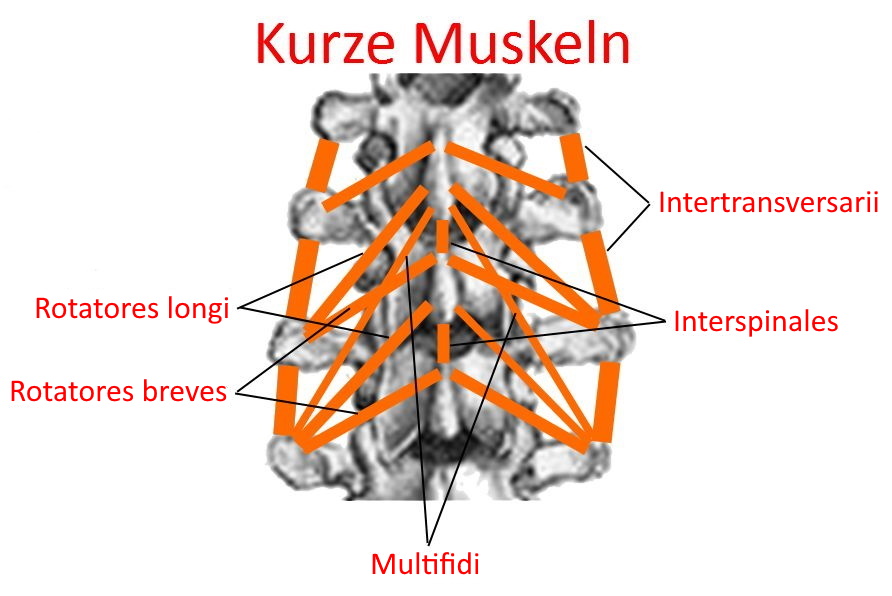yogabook / muscles / back / autochthonous muscles
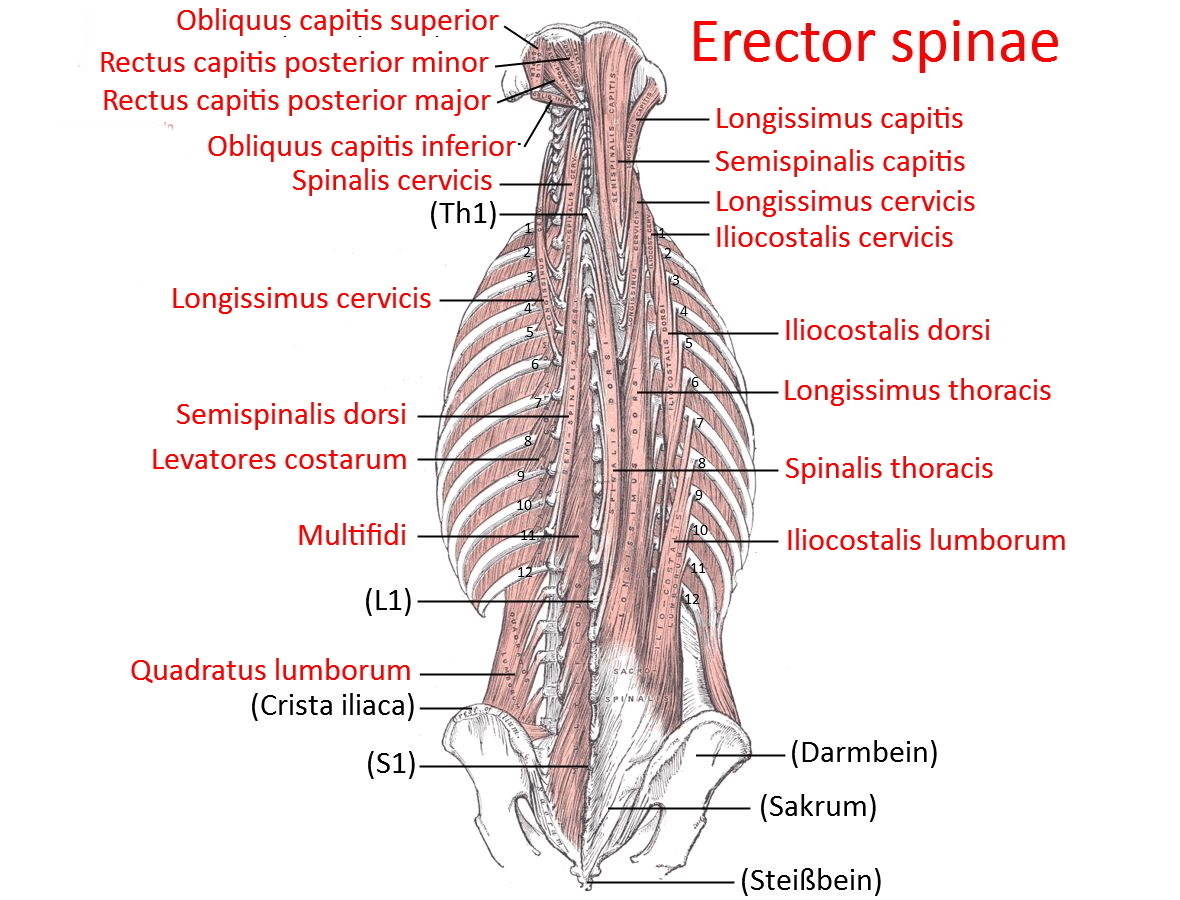
(weitere Bilder siehe unten)
Autochthonous back muscles / erector spinae / „back extensor“
the „back extensor“ or lat. erector spinae is a common term for all muscles that significantly straighten, laterally incline or rotate the spine from the curvature, are a diverse group of muscles. Most authors use this term synonymously with autochthonous back muscles, for the individual muscles see there. The autochthonous back muscles mainly attach to the spinous processes or transverse processes of the spine, as well as to theiliac crest (crista iliaca) and the occipital bone (os occipitale). Depending on where the muscles are attached, they perform a one-dimensional movement (e.g. only extension or only lateral flexion of the spine) or a combination movement. For this reason, postures that do not primarily involve extension of the spine are also mentioned below. The erector spinae is an auxiliary inspiratory respiratory muscle.
Origin: (various, mainly transverse and spinous processes of the vertebrae)
Insertion: (various, mainly transverse and spinous processes of the vertebrae)
Antagonists:
Movement:
Strengthening postures (602): The mainly extensor muscles are strengthened by: 3rd warrior pose, utkatasana, uttanasana: „table“, uttanasana: right-angled, halasana, urdhva dhanurasana, shoulderstand, shoulderstand: right-angled, right-angled headstand, deadlift, salabhasana, handstand: dvi pada, trikonasana, ardha chandrasana, purvottanasana: especially variations with the supporting leg(s) extended. The more lateral flexor muscles are strengthened by neutralising a lateral flexion tendency caused by gravity, as in trikonasana, ardha chandrasana, vasisthasana, ardha vasisthasana. Muscles with a more rotatory effect are strengthened by: jathara parivartanasana, parsvakonasana, parivrtta trikonasana.
Stretching postures (601): when stretching, a distinction must be made between the different parts or functions of the autochthonous back muscles. The extensor muscles are mainly stretched through significant flexion such as karnapidasana, , parsva upavista konasana, parsvottanasa. The lateral flexor muscles are stretched by trunk side bends: seated trunk side bend, parivrtta parsva upavists konasana, parivrtta janu sirsasana. The predominantly rotatory muscles such as the rotatores are stretched through contralateral rotation of the spine, for example in: twisting pose, maricyasana 3, parivrtta trikonasana, parivrtta ardha chandrasana, parivrtta parsvakonasana, parivrtta uttanasana, back stretching: twisted, jathara parivartanasana
Images
Autochthonous muscles, Scheme
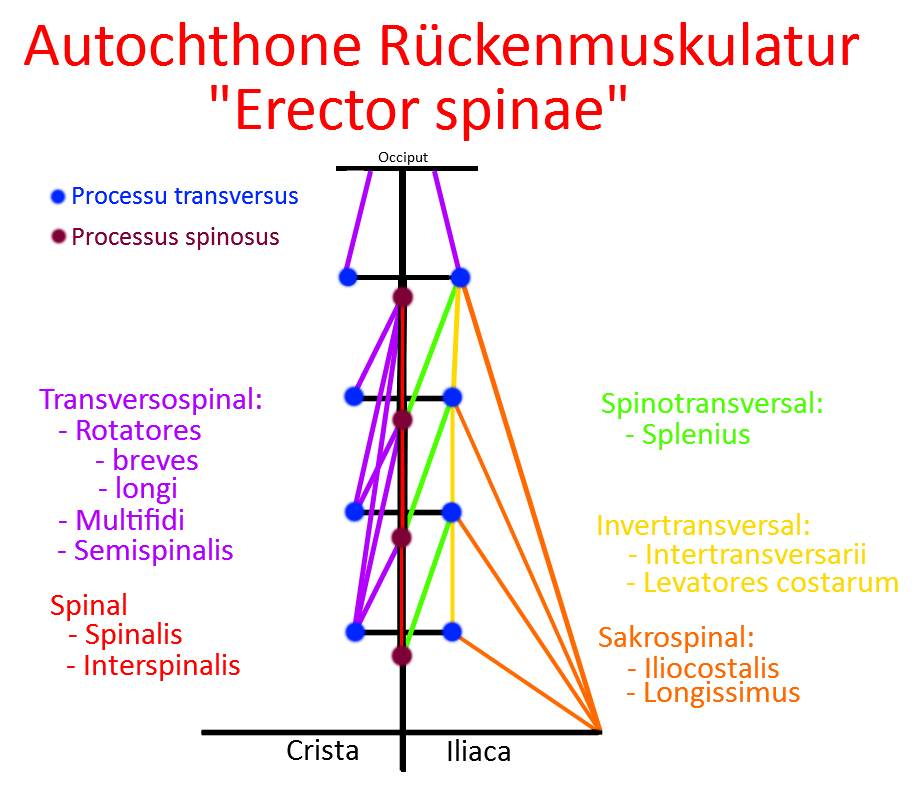
Autochthonous muscles (image links to linkmap)
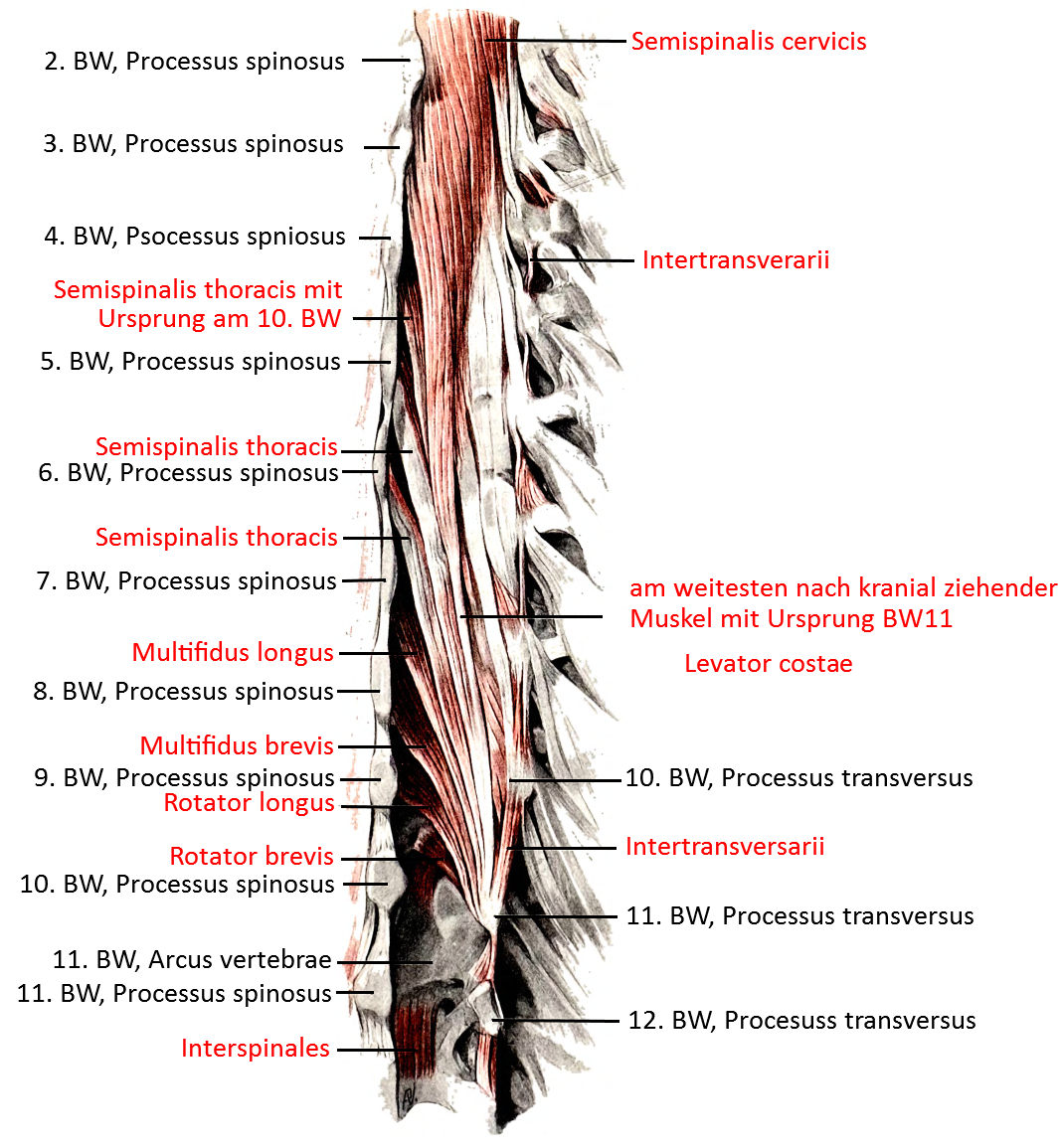
Scheme (image links to linkmap)
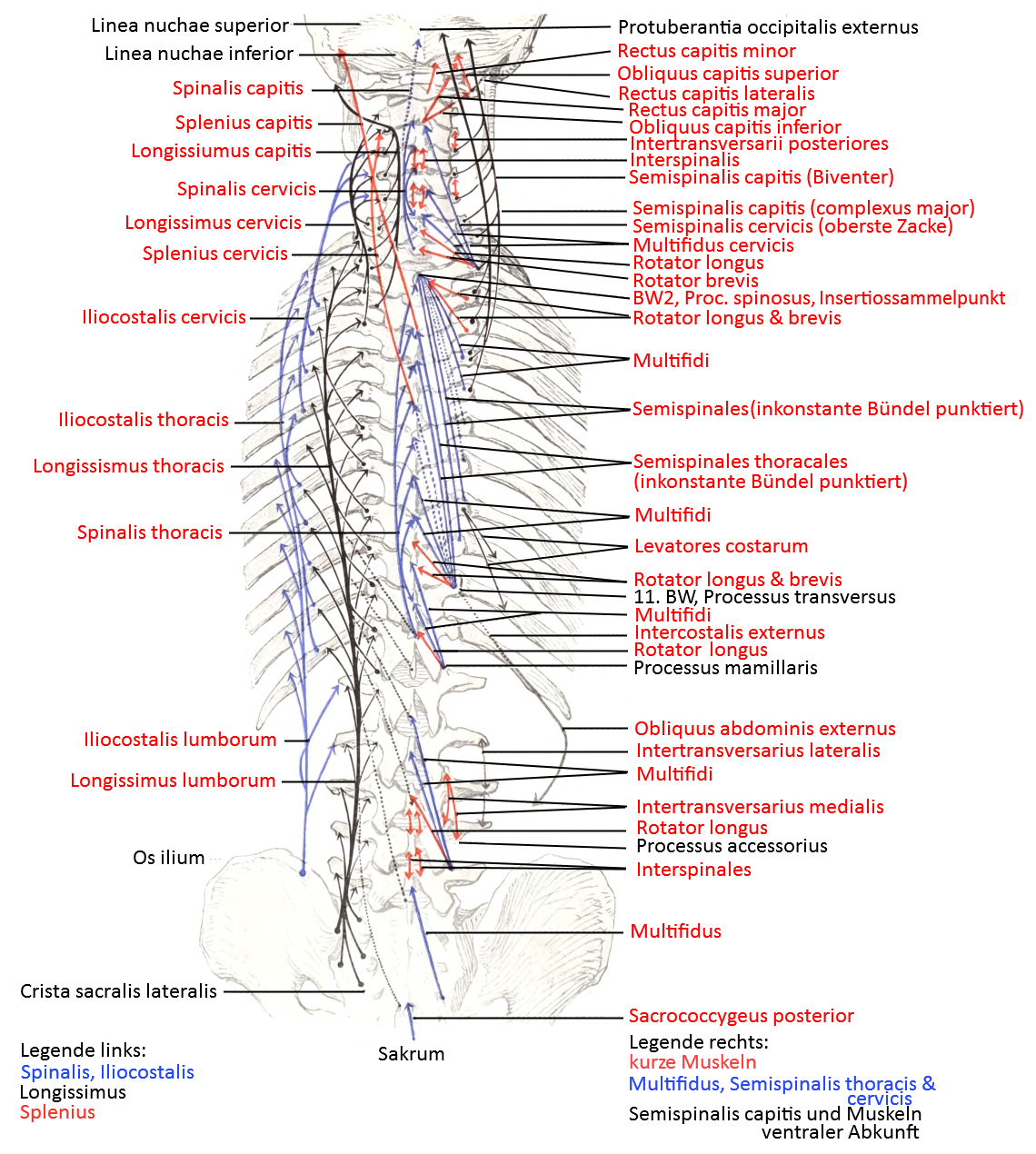
Lateral tract (image links to linkmap)
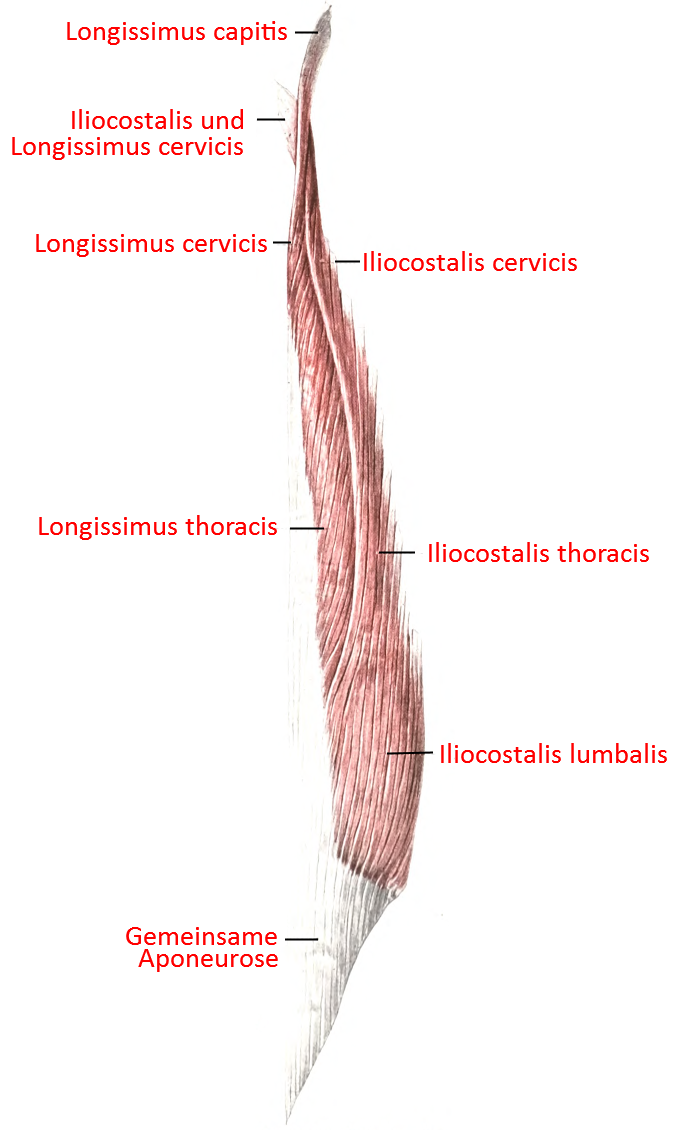
Transversospinal tract (image links to linkmap)
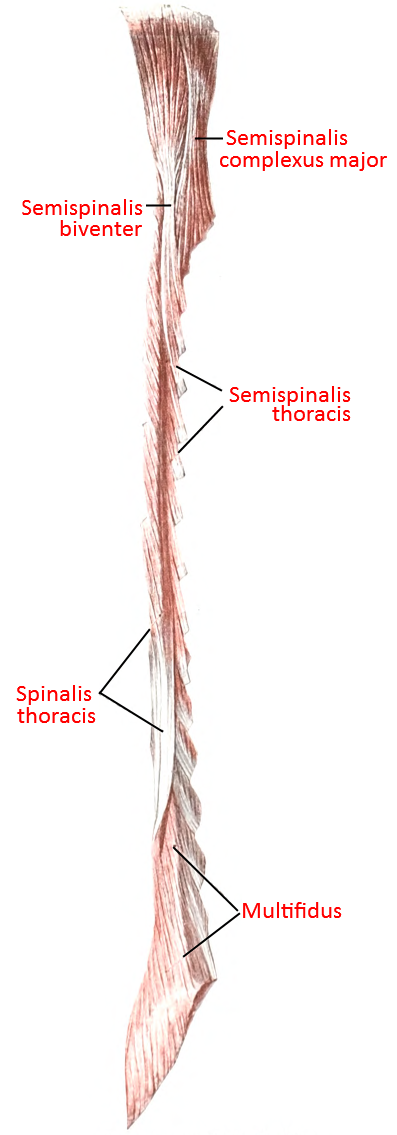
Short intervertebral
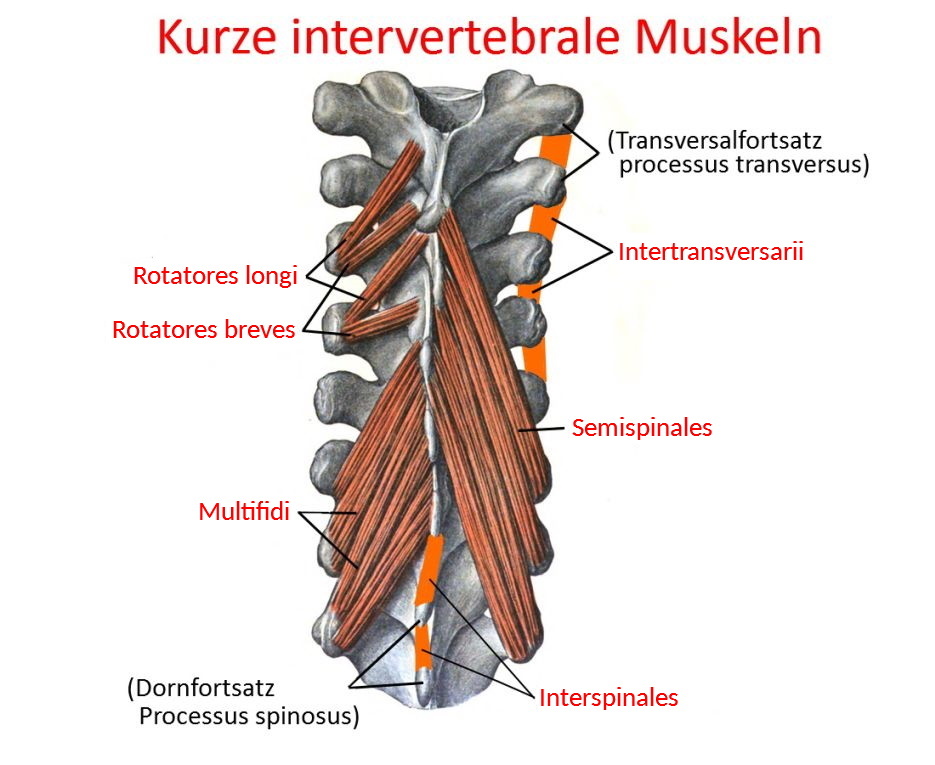
Short intervertebral, scheme
